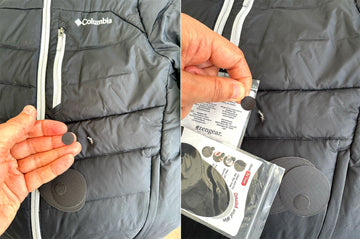8 Tips to Prevent Buttocks Discomfort While Running
by Emily Jannet on May 06, 2024
Running provides a thrilling way to exercise, delivering a multitude of physical and mental advantages. However, it's not uncommon for runners to experience discomfort or pain, particularly in the buttocks region. Buttocks pain while running can stem from various factors, including muscle strain, poor posture, or even underlying medical conditions. Regardless of the cause, experiencing pain in this area can significantly hinder your running performance and overall enjoyment. Thankfully, there are several strategies you can employ to prevent buttocks pain and continue running pain-free. In this article, we'll explore eight effective tips to help you avoid buttocks pain when you run.
-
Warm-Up Properly
One of the most crucial steps to prevent buttocks pain during your run is to warm up adequately. A proper warm-up helps prepare your muscles and joints for the activity ahead, reducing the risk of strain or injury. Focus on dynamic stretches that target the muscles in your lower body, including your glutes, hamstrings, and hip flexors. Incorporate exercises like leg swings, lunges, and hip circles to activate and loosen up these muscles before you hit the pavement.
-
Strengthen Your Glutes
Weak glute muscles can contribute to buttocks pain while running, as they play a significant role in stabilizing your pelvis and supporting your body during movement. Incorporate strength training exercises that target the glutes into your regular workout routine. Squats, lunges, hip thrusts, and clamshells are all excellent exercises for strengthening the glute muscles. By improving the strength and endurance of your glutes, you can reduce the likelihood of experiencing pain or discomfort during your runs.
-
Focus on Proper Form
Maintaining proper running form is essential for preventing buttocks pain and minimizing strain on your muscles and joints. Pay attention to your posture while you run, keeping your back straight, shoulders relaxed, and hips aligned. Avoid overstriding, as this can place excessive stress on your buttocks and hamstrings. Instead, aim for a shorter, quicker stride that allows for a more efficient and comfortable running gait. Engage your core muscles to provide stability and support as you move.
-
Gradually Increase Mileage
Ramping up your mileage too quickly can overload your muscles and lead to pain or injury, including buttocks pain. To avoid this, increase your running distance gradually over time, allowing your body to adapt and strengthen at a sustainable pace. Follow the 10% rule, which recommends increasing your weekly mileage by no more than 10% from one week to the next. This gradual approach gives your muscles and connective tissues time to adjust and reduces the risk of overuse injuries.
-
Invest in Supportive Footwear
The shoes you wear while running can have a significant impact on your comfort and performance, including the prevalence of buttocks pain. Invest in a pair of high-quality running shoes that provide adequate support, cushioning, and stability for your feet and ankles. Visit a specialty running store to get professionally fitted for shoes that are suited to your unique foot shape and gait. Worn-out or ill-fitting shoes can alter your biomechanics and increase the strain on your buttocks and lower body, so be sure to replace your shoes regularly.
-
Incorporate Cross-Training
Variety is key to maintaining a balanced and injury-free running routine. Incorporate cross-training activities into your weekly schedule to give your running muscles a break and prevent overuse injuries. Cycling, swimming, yoga, and strength training are all excellent options for cross-training that can help improve your overall fitness and prevent buttocks pain. Aim to cross-train at least two to three times per week, focusing on activities that complement your running routine and address any muscle imbalances or weaknesses.
-
Pay Attention to Body Signals
It's essential to listen to your body and pay attention to any warning signs of impending injury or discomfort. If you experience buttocks pain while running, don't ignore it or try to push through the pain. Instead, take a break from running and allow your body time to rest and recover. Use ice packs, foam rolling, and gentle stretching to alleviate soreness and inflammation in the affected area. If the pain persists or worsens, consult a healthcare professional for a proper diagnosis and treatment plan.
-
Incorporate Recovery Strategies
Proper recovery is just as important as training when it comes to preventing buttocks pain and maintaining optimal performance. Make sure to incorporate adequate rest days into your training schedule to allow your muscles and connective tissues to repair and rebuild. Prioritize sleep, hydration, and nutrition to support your body's recovery processes. Additionally, consider incorporating recovery modalities such as massage, foam rolling, and stretching into your routine to promote muscle relaxation and reduce tension in the buttocks and surrounding muscles.
Buttocks pain while running can be both frustrating and debilitating, but it doesn't have to derail your training or enjoyment of the sport. By implementing these eight strategies, you can effectively prevent buttocks pain and continue running comfortably and confidently. Remember to warm up properly, strengthen your glutes, focus on proper form, gradually increase mileage, invest in supportive footwear, incorporate cross-training, listen to your body, and prioritize recovery. With consistency and diligence, you can keep buttocks pain at bay and enjoy all the benefits that running has to offer.





